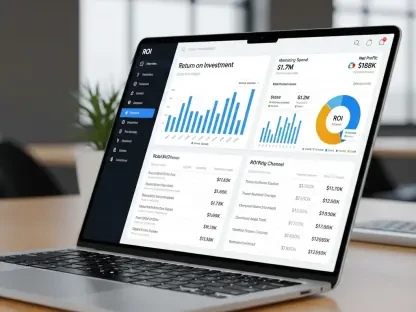In 2024, the retail sector is navigating a complex economic landscape characterized by unpredictable inflation rates, fluctuating consumer confidence, and ongoing supply chain disruptions influenced by geopolitical challenges. These factors combine to create a difficult environment for planning and executing effective marketing strategies. Consequently, many retailers are adopting a more conservative approach to their marketing budgets, seeking efficiency and higher ROI. In response to these hurdles, retailers face challenges including budget constraints, shifting consumer behavior, and increased competition. Retailers must prioritize spending on initiatives that offer the highest returns. For instance, some retailers are cutting down affiliate commission payments in Q3 to conserve the budget for the holiday shopping season. Additionally, consumer preferences and shopping habits have evolved, leading to phenomena like “digital fatigue.” This term, highlighted by Deloitte, describes consumers’ diminishing returns from traditional digital marketing channels like PPC, search, and display ads, as they seek more authentic connections with brands. The competitive landscape is becoming more intense, with numerous brands vying for consumer attention and dollars. At the same time, consumers are slightly pulling back on spending in Q3, as noted by Morningstar.
Leveraging Affiliate Channels
Affiliate marketing is presented as a cost-effective solution to drive sales and enhance brand awareness. Unlike traditional advertising that requires upfront investments, affiliate marketing operates on a performance-based model, with retailers paying only for actual conversions or sales. This model reduces the risk of wasted spending. Retailers should focus on fostering strong relationships with high-performing affiliates. They might even consider higher CPAs for well-performing publishers to ensure continued conversions through their audiences, maximizing volume at a cost-effective ROI. By strategically selecting and nurturing these partnerships, retailers can create a reliable revenue stream that aligns with their budget constraints. Additionally, retailers can explore niche affiliate networks that cater to specific demographics or interests. This targeted approach can help in reaching a more engaged audience, thereby increasing the likelihood of conversions. By continuously monitoring and optimizing their affiliate programs, retailers can ensure they are getting the best possible return on investment. Such efforts not only enhance ROI but also contribute to sustained brand loyalty and customer engagement over time.
Crucially, retailers should remain agile and adaptable when it comes to their affiliate strategies. The world of digital marketing is ever-evolving, necessitating regular analysis and adjustments to affiliate partnerships and tactics. By leveraging data analytics tools, retailers can identify which affiliates and channels yield the best results, allowing them to allocate resources more effectively. Also, investing in education and communication with affiliates is key to aligning goals and expectations, ensuring mutual success. This involves regularly updating affiliates on promotional campaigns, new products, and brand messaging standards. Clear and open communication can lead to higher engagement rates and stronger affiliate performance, which in turn continues to drive value even in challenging economic climates.
Reassessing Pay-Per-Click (PPC) Advertising
PPC advertising, once a cornerstone of digital marketing, may now be losing effectiveness due to increased competition and rising per-click costs. Retailers should carefully evaluate the performance of their PPC campaigns, particularly if they are focused on conversions, and consider reallocating funds to more cost-effective channels if PPC isn’t meeting ROI goals. Several tactics are suggested to optimize PPC spending. Retailers could restrict their PPC shopping feed tactics to full-price or high-margin items. Discounted or clearance products, although more likely to drive conversions, might have slim or negative margins, affecting the channel’s performance. By focusing on higher-margin items, retailers can ensure that their PPC efforts are contributing positively to their bottom line. Another strategy involves assessing brand PPC advertising. If retailers are already ranking well in organic search for brand-related terms, they can consider reducing the budget for branded paid search ads. Instead, they should focus on improving their placement in organic search results through tactics like optimizing product pages, using structured snippets, and incorporating user-generated content like reviews to drive engagement. This approach not only saves money but also strengthens long-term organic visibility, creating a sustainable impact on the brand’s digital presence.
Moreover, retailers must continuously track and analyze PPC campaign metrics to make informed decisions. This involves using advanced analytics tools to monitor click-through rates, conversion rates, and overall ROI. By gaining deeper insights into ad performance, retailers can identify underperforming keywords and ad groups, allowing them to reallocate budget to more successful campaigns. Additionally, implementing A/B testing can be beneficial in determining which advertisements resonate best with the target audience, facilitating more effective budget allocation. Beyond the mechanics of PPC campaigns, retailers should pay attention to the creative aspects of their ads. Compelling and relevant ad copy, paired with attractive visuals, can significantly boost engagement and conversions. Crafting messages that speak directly to consumer needs and desires, particularly during challenging economic times, can make PPC efforts more impactful. Thus, by refining both the strategic and creative elements of their PPC campaigns, retailers can maximize return on investment and maintain a competitive edge in the digital landscape.
Maximizing Email Marketing
Email marketing continues to be an efficient and effective channel for driving engagement and incremental sales from opt-in customers. Given its relatively low cost and high ROI, retailers should invest in building and maintaining a robust email marketing strategy. Personalization is critical in modern email marketing. Generic “batch and blast” emails no longer suffice. Retailers should segment their email lists based on customer behavior, preferences, past purchase history, and demographics to deliver personalized and relevant content. They should also leverage their email provider and in-house data team to develop a personalization strategy in Q3 that can be fully implemented during the critical fourth quarter. Furthermore, retailers can use email marketing to re-engage lapsed customers by offering exclusive promotions or personalized product recommendations. By maintaining regular communication with their customer base, retailers can foster loyalty and drive repeat purchases, even in a challenging economic environment. This ongoing engagement not only boosts sales but also reinforces brand loyalty, enhancing the overall customer lifetime value.
Creative and compelling content is paramount in email marketing. Retailers should prioritize storytelling, high-quality images, and dynamic content like videos and animations to capture and retain the audience’s attention. Interactive elements such as polls or surveys can make emails more engaging and provide valuable insights into customer preferences and behaviors. Additionally, timely and relevant emails are essential. Retailers can leverage automation tools to send triggered emails based on specific customer actions, such as abandoned cart reminders, post-purchase follow-ups, or personalized birthday offers. This approach ensures that customers receive relevant messages at the right time, increasing the chances of conversion. Furthermore, it is crucial to monitor email campaign performance regularly. Metrics such as open rates, click-through rates, and conversion rates provide insights into what resonates with the audience and what needs refinement. A/B testing different elements of email campaigns, such as subject lines, visuals, and calls to action, can help in optimizing results. This data-driven approach enables retailers to continually refine their strategies, ensuring that email marketing remains a valuable and effective channel in their overall marketing mix.
Enhancing the Customer Experience
Investing in customer experience (CX) is vital for increasing customer satisfaction, loyalty, and sales. Retailers should aim to create seamless and enjoyable shopping experiences both online and offline. Personalization, as mentioned in the email strategy, is vital. Data can be used to tailor product recommendations and marketing messages on the site to individual customer segments. Multi-channel retailers must ensure a consistent and cohesive experience across all consumer touch points, including online, mobile, and in-store experiences. Each interaction should reinforce the brand’s message and leave the customer feeling positive, thereby improving customer engagement. By focusing on creating a unified and enjoyable shopping experience, retailers can differentiate themselves from competitors and build a loyal customer base. Another aspect of improving CX involves investing in customer service training and technology to ensure consistent and prompt support. Every customer service interaction reflects on the brand’s reputation and can be used to further personalize the shopping experience, improving future customer interactions. By prioritizing customer satisfaction, retailers can drive long-term loyalty and repeat business.
Additionally, retailers should utilize customer feedback to continuously improve the shopping experience. Encouraging customers to leave reviews, participate in surveys, or engage on social media platforms provides valuable insights into areas of improvement. Addressing customer feedback promptly demonstrates a brand’s commitment to its clientele, fostering trust and loyalty. Investing in advanced technologies like chatbots and AI-driven customer support can streamline service processes and provide immediate assistance, enhancing the overall customer experience. Furthermore, enhancing the in-store experience with digital integrations such as mobile payment options, in-store pickup, and interactive displays can bridge the gap between online and offline shopping. By blending technology with traditional retail, retailers can offer a richer and more personalized shopping journey. Lastly, CX should extend to after-sales support. Providing excellent after-purchase service, such as easy returns policies, warranty management, and proactive communication about delivery status, can significantly impact customer satisfaction. Positive after-sales experiences not only enhance brand perception but also encourage repeat business and word-of-mouth recommendations. Hence, a comprehensive CX strategy that covers every customer touch point and leverages both human and technological resources is essential for success in today’s retail environment.
Recap and Conclusion
In 2024, the retail sector is maneuvering through a challenging economic landscape marked by unpredictable inflation, varying consumer confidence, and ongoing supply chain issues due to geopolitical factors. These elements make it tough to plan and execute effective marketing strategies. As a result, many retailers are opting for a more cautious approach to their marketing budgets, aiming for efficiency and better ROI. To tackle these challenges, retailers are dealing with budget limits, changing consumer behavior, and tougher competition. They need to focus on spending that yields the highest returns. For example, some retailers are reducing affiliate commission payments in Q3 to save budget for the holiday shopping season. Additionally, consumer preferences have shifted, leading to “digital fatigue,” where traditional digital marketing channels like PPC, search, and display ads are becoming less effective as consumers seek genuine brand connections, as noted by Deloitte. The competition is growing stiffer, with various brands competing for consumer dollars. Meanwhile, consumers are slightly reducing their spending in Q3, highlighted by Morningstar.









